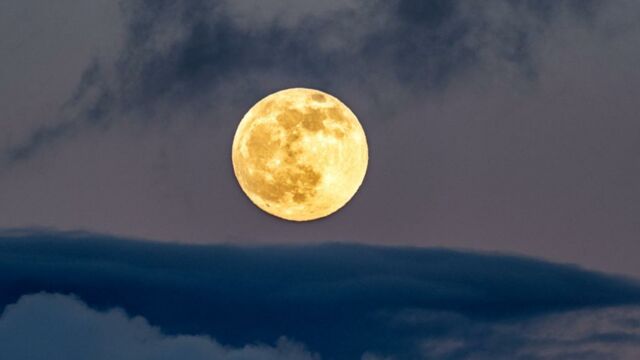Here’s everything you need to know about tonight's super moon, August 12

The last supermoon of the year will take place this week. Here is everything you need to know about this astronomical event.
Astronomy enthusiasts can look forward to many astronomical events in August 2022. In addition to the various meteor showers that will be scattered over the next few weeks, a supermoon is about to appear. The Sturgeon Super moon.
Discover our latest podcast
What is a supermoon?
Flower supermoon, strawberry supermoon, beaver supermoon. All of these events have extremely good-sounding names, admittedly, but why are they called 'super'?
More under this adMore under this adAccording to Star Walk, the term was coined in 1979, following the publication of an article in the Dell Horoscope magazine. In this article, astrologer Richard Nolle defined a supermoon as 'A new or full moon that occurs when the Moon is at or near the closest to the Earth (at least 90% of the shortest Earth-Moon distance) in a given orbit.' This would make Earth's natural satellite brighter and visibly larger!
It is important to note that this term has no scientific basis: the real name for this phenomenon is perigee-syzygy. This does not prevent NASA from occasionally talking about 'super moons'. It's still much more intuitive and softer to the ear.
What about the sturgeon supermoon?
Like the strawberry supermoon, which got its name from the time when the flowers are harvested, the sturgeon supermoon has a historical origin. Native Americans are said to have nicknamed it because sturgeon were traditionally caught during this time of the summer.
More under this adMore under this adThis year, the supermoon will take place on the night of 12-13 August, at the same time as the Perseid meteor shower. Let's hope that this supermoon, which will peak at 2.36 am (GMT), will not spoil the spectacle of this other astronomical event.
More under this adMore under this adThis article was translated from Gentside FR.
Read more:
⋙ From meteor showers to super moons: Here’s all you need to know about the night sky events in August
⋙ NASA finally reveals damage done to James Webb Telescope after being hit by meteoroids